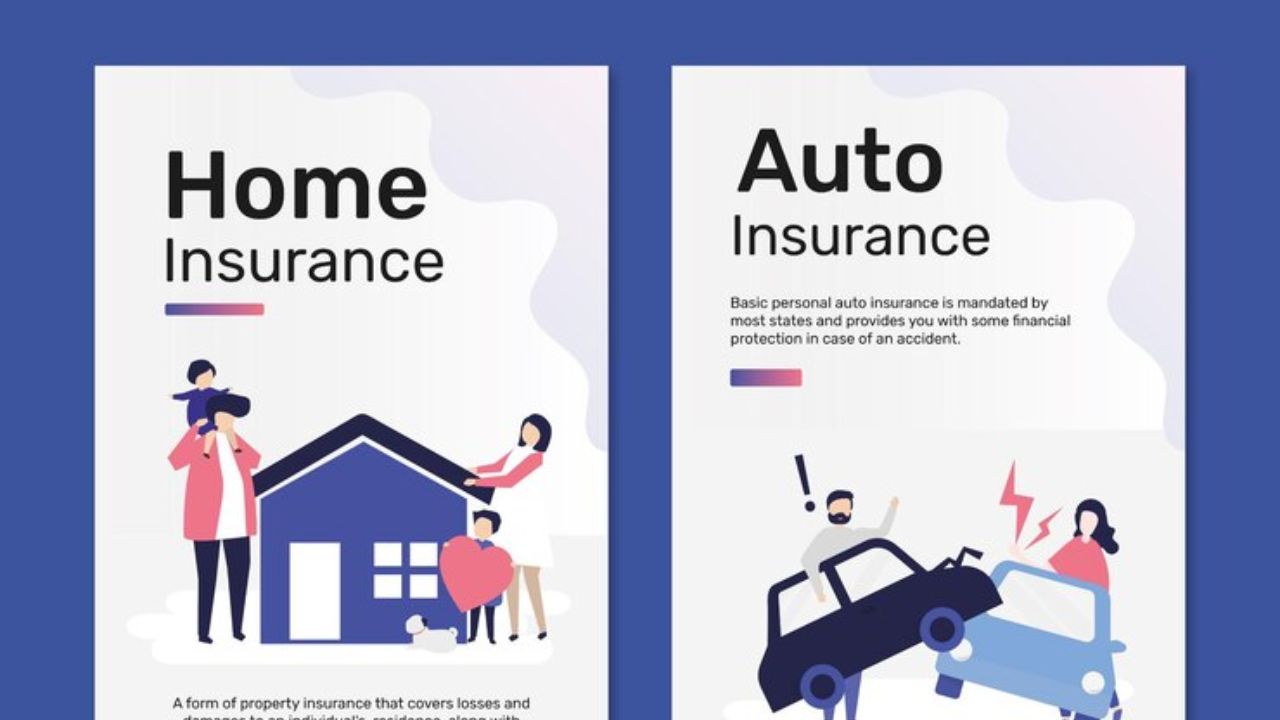Introduction
Life’s unpredictable, right? One minute, you’re cruising down the highway with the windows down, enjoying the breeze, and the next, a deer jumps out of nowhere. Or perhaps you’re cozied up on the couch, sipping your favorite brew, when you notice a leak from the ceiling after a heavy downpour. Scenarios like these remind us just how vital insurance is—specifically, Home and Auto Insurance.
Whether you’re a first-time homeowner, a seasoned driver, or both, navigating the world of insurance can feel like a daunting task. There are so many options, so much fine print, and plenty of opportunities to overpay if you’re not careful. But don’t sweat it—we’ve got you covered! This article will break down everything you need to know about Home and Auto Insurance, from what it is to why you need it, and how to make the most out of your policies.
What is Home and Auto Insurance?
Before we dive into the nitty-gritty, let’s get the basics down. Home and Auto Insurance are two distinct types of insurance, each designed to protect you from financial losses related to your home and your vehicle. Here’s a quick rundown:
- Home Insurance: This policy protects your house and the things inside it. It covers damage to the physical structure of your home, as well as your personal belongings. Home insurance also provides liability coverage if someone is injured on your property.
- Auto Insurance: This type of insurance covers damage to your car and provides liability coverage if you’re responsible for an accident. Depending on the policy, it can also cover medical costs, repairs, and even theft.
Why Do You Need Home and Auto Insurance?
You might be wondering, “Do I really need insurance for my home and car?” The short answer: absolutely! Here’s why:
1. Financial Protection
Accidents happen, and when they do, they can be costly. Without insurance, you could be on the hook for thousands (or even tens of thousands) of dollars. Home and Auto Insurance provide a safety net, helping to cover the costs of repairs, replacements, and medical bills.
2. Legal Requirements
In most places, you’re legally required to have some form of auto insurance. If you’re caught driving without it, you could face hefty fines or even lose your license. While home insurance isn’t typically mandated by law, if you have a mortgage, your lender will likely require it.
3. Peace of Mind
Knowing you’re covered in case of an accident, theft, or natural disaster can help you sleep a little easier at night. Instead of worrying about what might go wrong, you can enjoy life, knowing that you’re protected.
Types of Home and Auto Insurance Coverage
Not all insurance policies are created equal. Depending on your needs and budget, you can choose from a variety of coverage options. Let’s take a closer look at what’s available.
Home Insurance Coverage
- Dwelling Coverage
This covers the physical structure of your home—walls, roof, floors, and everything in between. If your house is damaged by a covered event, like a fire or a storm, dwelling coverage helps pay for repairs or rebuilding. - Personal Property Coverage
Your belongings—furniture, electronics, clothes—are covered under this part of your policy. If your stuff is stolen or damaged, personal property coverage can help replace it. - Liability Coverage
If someone is injured on your property, or if you accidentally damage someone else’s property, liability coverage kicks in. This can cover medical bills, legal fees, and damages. - Additional Living Expenses (ALE)
If your home is uninhabitable due to damage, ALE covers the cost of living elsewhere—like a hotel or rental—while your home is being repaired.
Auto Insurance Coverage
- Liability Coverage
This is the most basic type of auto insurance and is often required by law. It covers the costs if you’re responsible for an accident, including property damage and medical bills. - Collision Coverage
Collision coverage helps pay for repairs to your vehicle if you’re in an accident, whether it’s with another car or an object, like a tree or a fence. - Comprehensive Coverage
This covers damage to your car that isn’t caused by a collision, such as theft, vandalism, or natural disasters. It’s a must-have if you want to protect your car from all sorts of unexpected events. - Uninsured/Underinsured Motorist Coverage
If you’re in an accident with someone who doesn’t have insurance (or doesn’t have enough), this coverage helps cover the costs.
How to Choose the Right Home and Auto Insurance
Choosing the right insurance can feel like searching for a needle in a haystack. There are so many options, each with its own benefits and drawbacks. But don’t worry—we’ve got some tips to help you make the best choice.
1. Assess Your Needs
Start by taking a close look at your situation. Do you live in an area prone to natural disasters? Do you have a high-value home or car? Understanding your specific needs will help you choose the right coverage.
2. Shop Around
Insurance rates can vary widely from one provider to the next, so it pays to shop around. Get quotes from multiple companies and compare not just the price, but also the coverage options and customer service ratings.
3. Bundle Your Policies
Many insurance companies offer discounts if you bundle your home and auto insurance together. This can be a great way to save money and simplify your life by dealing with just one insurer.
4. Read the Fine Print
We know, it’s boring, but reading the fine print is crucial. Make sure you understand what’s covered (and what’s not), as well as any exclusions or limitations in your policy.
5. Consider Higher Deductibles
Raising your deductible can lower your premium, but be sure you can afford to pay the higher amount if you need to file a claim.
Common Mistakes to Avoid
Even the best of us can slip up when it comes to insurance. Here are some common mistakes to avoid:
- Underinsuring Your Home
Don’t just insure your home for its market value—consider the cost of rebuilding it from scratch. Construction costs can be higher than you think! - Ignoring Your Policy’s Exclusions
Some policies don’t cover things like floods or earthquakes. Make sure you know what’s excluded and consider buying additional coverage if necessary. - Not Updating Your Coverage
Have you renovated your home? Bought a new car? Make sure to update your policy to reflect these changes, so you’re fully covered. - Choosing the Cheapest Option
While it’s tempting to go for the lowest premium, it might not provide enough coverage. Make sure you’re getting good value, not just a good price.
FAQs
1. Can I lower my home and auto insurance premiums?
Absolutely! You can lower your premiums by raising your deductible, bundling your policies, and taking advantage of discounts, like those for safe driving or having a home security system.
2. Is it necessary to review my insurance policy every year?
Yes! Your needs and circumstances can change, so it’s important to review your policy annually to ensure you have the right coverage.
3. What happens if I file too many claims?
Filing too many claims can lead to higher premiums or even cancellation of your policy. Try to save claims for significant losses and cover smaller expenses out of pocket if possible.
4. Are there any discounts available for first-time homeowners?
Many insurance companies offer discounts to first-time homeowners. It’s worth asking about any special offers when you’re shopping for a policy.
5. Does my credit score affect my insurance rates?
In many places, your credit score can impact your insurance premiums. A higher credit score often leads to lower rates, so it’s worth working on improving your credit.
Conclusion
Home and Auto Insurance might not be the most exciting topic, but it’s one of the most important when it comes to protecting your assets and your peace of mind. With the right coverage, you can rest easy knowing that your home and car—and everything inside them—are safeguarded against life’s unexpected twists and turns.
Remember, insurance isn’t a one-size-fits-all deal. Take the time to assess your needs, shop around, and choose a policy that fits your lifestyle and budget. Avoid common mistakes, stay informed, and review your policies regularly to make sure you’re always covered.
So, go ahead—take that road trip, enjoy your time at home, and live your life to the fullest, knowing that you’ve got the protection you need.

